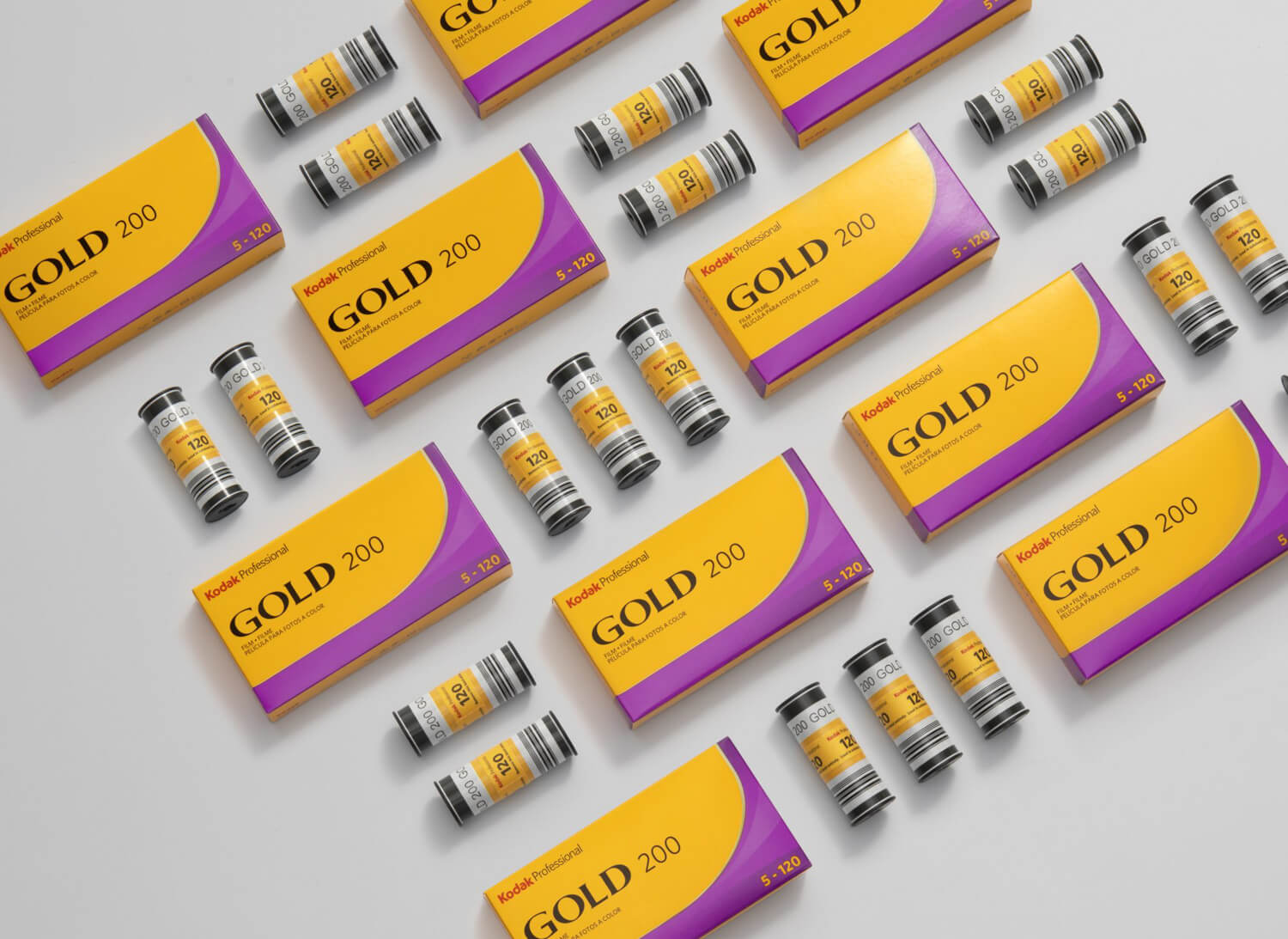Following months of speculation, and around two decades since its original discontinuation, Kodak Alaris* has finally announced the rerelease of its popular consumer-grade Kodak Gold 200 colour negative film in 120 format, which is available right now for stores to purchase in 5-pack “Pro Packs”.
It’s going to take a few days before you see it available online for purchase and although we’ve yet to see any sample photos, you can see 5 Frames of Kodak Gold 200 in 120 format show on a Pentax 67 right here.
For the impatient/short of time, here’s a promo packshot:

You’re welcome to leave now and bug your photographic film supplier of choice, or, you can stick around for just a touch more information.
To reiterate, the film is being released today (March 21st) and works in any 120 format film camera (or any film back/magazine that takes 120 format film). The film is available for dealers, retailers, and distributors to purchase — so expect a while before it starts hitting stores, and according to a source, is intended to be priced 25% lower than Portra 160/400 and Ektar 100 in 120 format. I really hope we see this being passed down to consumers, colour negative film prices are utterly ridiculous as of the past 2 years or so and the price gouging taking place is both a barrier for new film photographers and utterly ridiculous in my opinion.
Off mt soapbox and the new film is based on the current Kodak Gold 200 emulsion, as opposed to the previous iteration of Kodacolor 200, which has a relatively short existence between 1988 and 1997.

For the history buffs among you, the Kodakcolor name first graced a color negative film exactly 80 years ago at the time of writing back in 1942 (35mm format became available in 1958). Like Kodak’s modern stocks, it was coated on triacetate, but in comparison to today’s colour negative products, cane in at a relatively slow 25/32 ISO.
Like many other of Kodak’s offerings at the time, the film was required to be returned for development and used the now-defunct C-22 development process. The film was superseded in the early 1960s by Kodacolor X and then by Kodacolor II in 1972, which brought the ISO up to 80 (and then again to 100), introduced the new 110 film format, and welcomed the arrival of the C-41color negative film development process still used today.
Today’s release marks a little over four years since the return of Kodak T-MAX P3200 film and about three and a half years since the announcement EKTACHROME E100 was back in 35mm format. If you’re interested in more, 120 and 4×5 format EKTACHROME E100 was announced in December 2019.
It’s wonderful to see a new film being brought back and I look forward to seeing Kodak start to really lean into new film research and products. At the top of my list are AEROCHROME (as always) and an ISO 400 slide film, please.
Thanks for reading!
~ EM
* Noted as Kodak Alaris, however, the film is being released under their Kodak Moments brand.
Share your knowledge, story or project
The transfer of knowledge across the film photography community is the heart of EMULSIVE. You can add your support by contributing your thoughts, work, experiences and ideas to inspire the hundreds of thousands of people who read these pages each month. Check out the submission guide here.
If you like what you’re reading you can also help this passion project by heading over to the EMULSIVE Patreon page and contributing as little as a dollar a month. There’s also print and apparel over at Society 6, currently showcasing over two dozen t-shirt designs and over a dozen unique photographs available for purchase.








One response to “25% cheaper than both Portra and Ektar: the return of Kodak Gold 200 film in 120 format”
Now, I’m hoping Kodak decides to release ProImage 100 in 120 format!